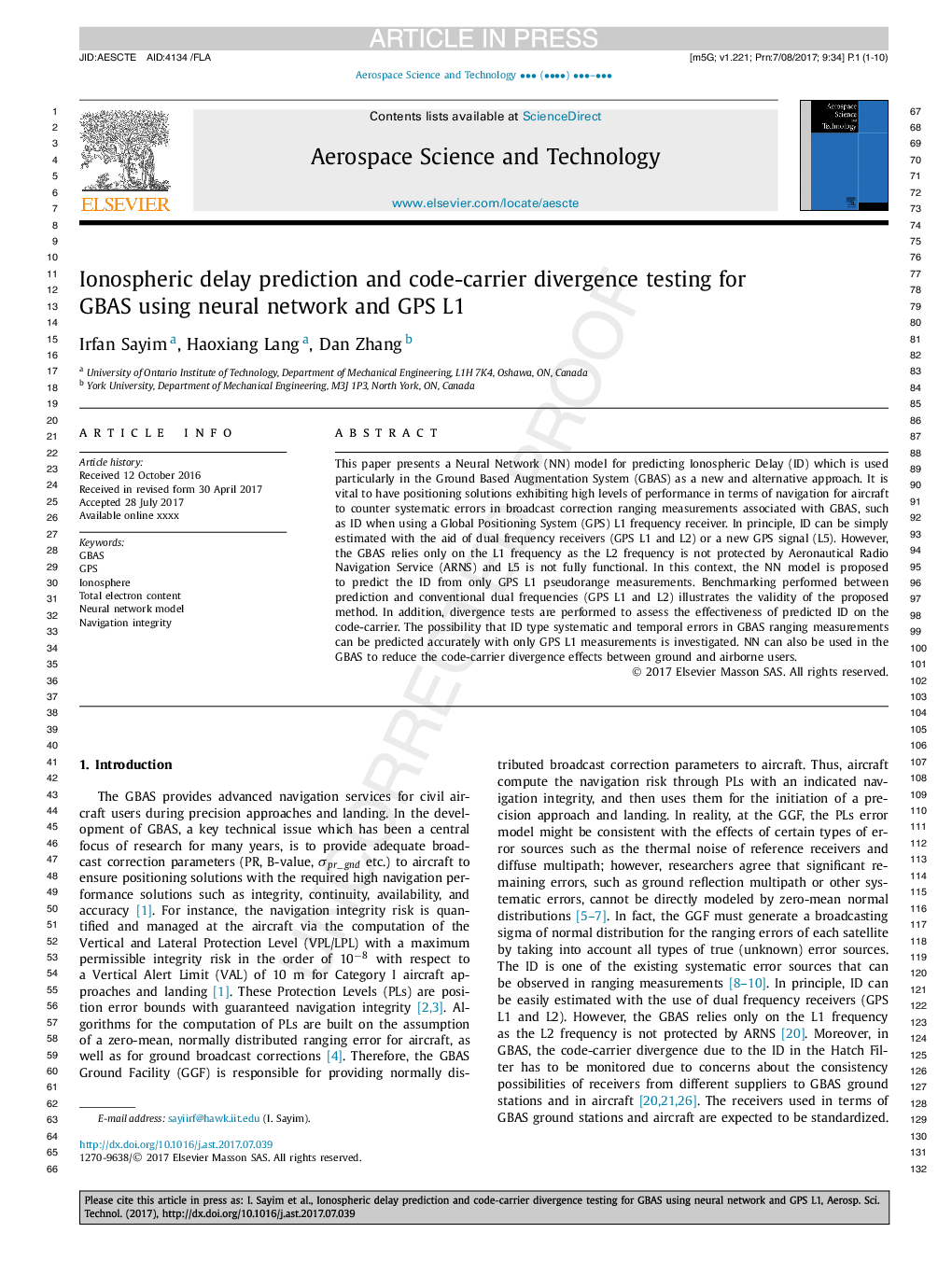| Article ID | Journal | Published Year | Pages | File Type |
|---|---|---|---|---|
| 5472589 | Aerospace Science and Technology | 2017 | 10 Pages |
Abstract
This paper presents a Neural Network (NN) model for predicting Ionospheric Delay (ID) which is used particularly in the Ground Based Augmentation System (GBAS) as a new and alternative approach. It is vital to have positioning solutions exhibiting high levels of performance in terms of navigation for aircraft to counter systematic errors in broadcast correction ranging measurements associated with GBAS, such as ID when using a Global Positioning System (GPS) L1 frequency receiver. In principle, ID can be simply estimated with the aid of dual frequency receivers (GPS L1 and L2) or a new GPS signal (L5). However, the GBAS relies only on the L1 frequency as the L2 frequency is not protected by Aeronautical Radio Navigation Service (ARNS) and L5 is not fully functional. In this context, the NN model is proposed to predict the ID from only GPS L1 pseudorange measurements. Benchmarking performed between prediction and conventional dual frequencies (GPS L1 and L2) illustrates the validity of the proposed method. In addition, divergence tests are performed to assess the effectiveness of predicted ID on the code-carrier. The possibility that ID type systematic and temporal errors in GBAS ranging measurements can be predicted accurately with only GPS L1 measurements is investigated. NN can also be used in the GBAS to reduce the code-carrier divergence effects between ground and airborne users.
Related Topics
Physical Sciences and Engineering
Engineering
Aerospace Engineering
Authors
Irfan Sayim, Haoxiang Lang, Dan Zhang,
